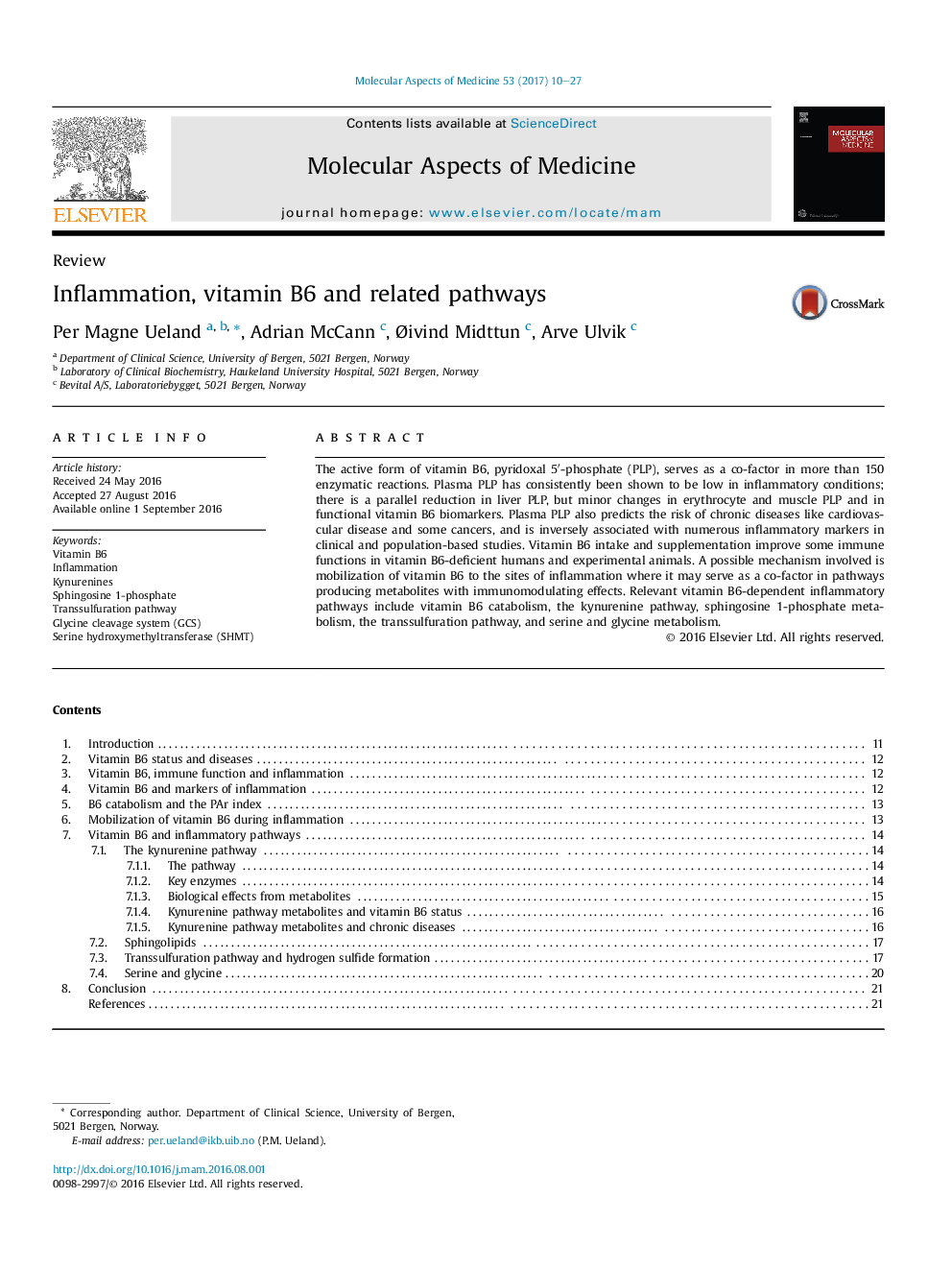| Article ID | Journal | Published Year | Pages | File Type |
|---|---|---|---|---|
| 5513854 | Molecular Aspects of Medicine | 2017 | 18 Pages |
The active form of vitamin B6, pyridoxal 5â²-phosphate (PLP), serves as a co-factor in more than 150 enzymatic reactions. Plasma PLP has consistently been shown to be low in inflammatory conditions; there is a parallel reduction in liver PLP, but minor changes in erythrocyte and muscle PLP and in functional vitamin B6 biomarkers. Plasma PLP also predicts the risk of chronic diseases like cardiovascular disease and some cancers, and is inversely associated with numerous inflammatory markers in clinical and population-based studies. Vitamin B6 intake and supplementation improve some immune functions in vitamin B6-deficient humans and experimental animals. A possible mechanism involved is mobilization of vitamin B6 to the sites of inflammation where it may serve as a co-factor in pathways producing metabolites with immunomodulating effects. Relevant vitamin B6-dependent inflammatory pathways include vitamin B6 catabolism, the kynurenine pathway, sphingosine 1-phosphate metabolism, the transsulfuration pathway, and serine and glycine metabolism.
